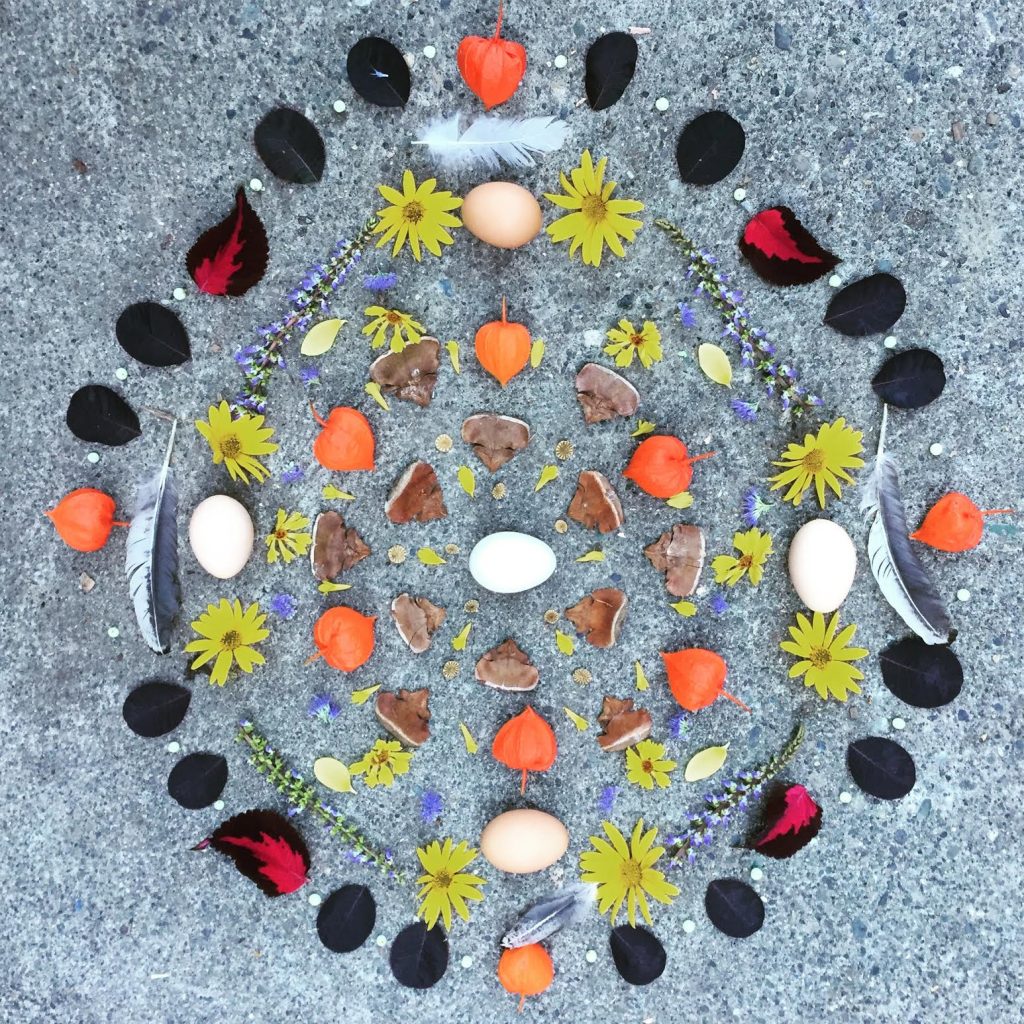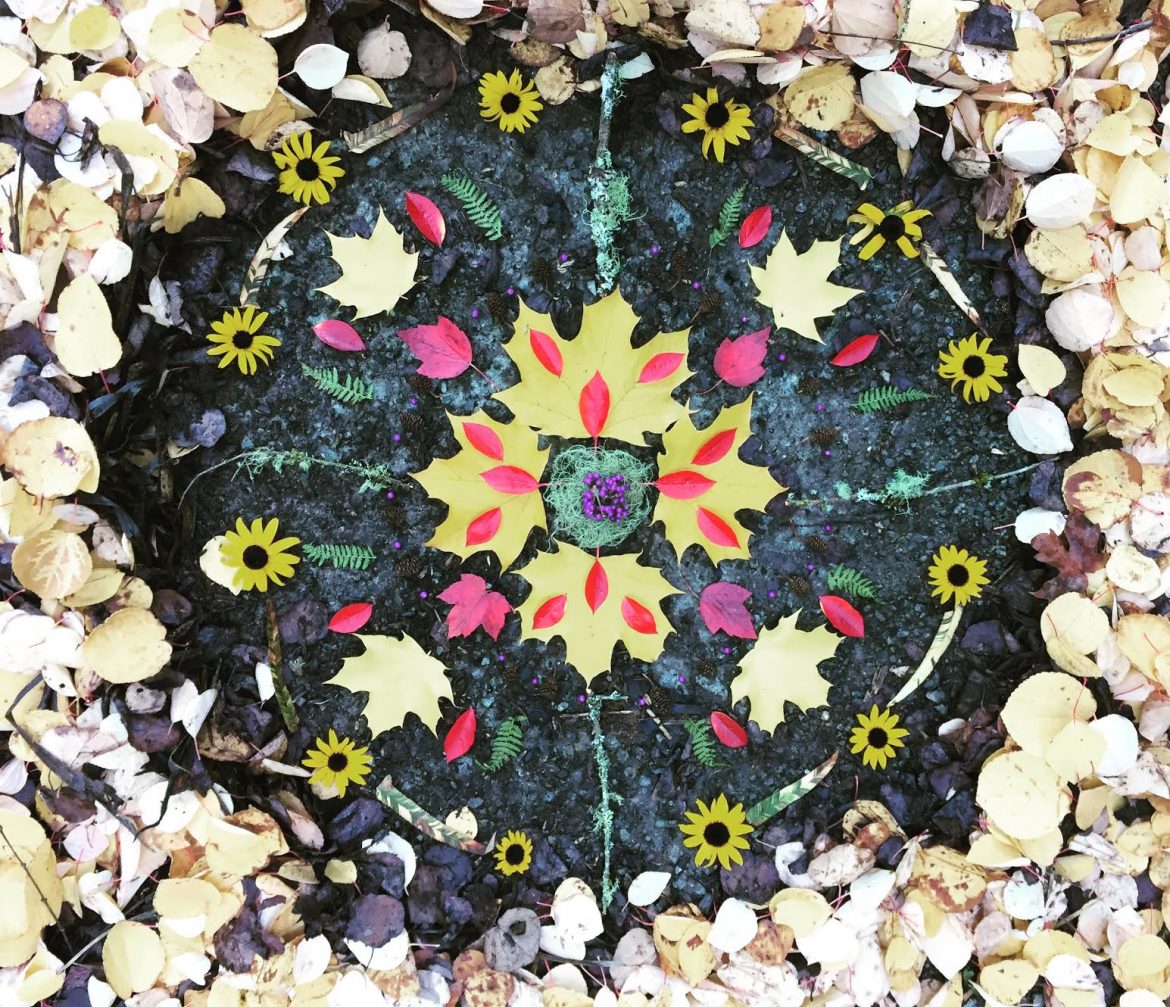By Mary DeJong —
This is a practice of remembering, remembering and reacquainting with the presence and names of the plant-life within one’s homescape (1). This is a time when the seasons’ reveal who shows up and who has been there all along but whose shape has shifted as the months turn. This is an invitation to transform a stranger into a Thou by the practice of learning and saying their name. This is a process of knowing so that respect and love can emerge and transform how we live upon the land, for it has been said that one cannot love what one does not know.
Beyond the beauty that emerges from the creation of a nature mandala, there are deep truths, profound invitations, and mythopoetic metaphor that reside within the design as well. To discover these aspects, it is well worth the time to discover the names and characteristics of those with whom we share our landscapes—you may find you reconnect with neighbors in the process! When I was collecting plants for my November mandala, I could see the orange orbs of my neighbor’s persimmons above the tall fence across from my home. Sadly, this fence has created a sense of disconnection between our families. However, my desire for one of those persimmons for my mandala was strong enough that I quickly devised a plan that would hopefully find this fruit not only in my basket but also strengthen neighborly relationships. I went to my cupboard for a quart of raspberry lavender preserves, put up this summer from our yard’s bounty. My daughter and I crossed the street, basket and jar in hand, and unlatched our neighbor’s gate. In response to our knock on the door, our Cambodian neighbor Bhun answered, accepted our jar of jam in exchange for some of his persimmon fruit! Despite our language barrier, the joy of sharing the fruit of our land as neighbors was mutual.
——
The accompanying practice of naming the natural elements that form the mandala exercise the sense of seeing. You will find that once your mandala is complete, you will begin seeing the selected plants all around you! This is the beginning of a vital and fun interrelationship with creation; there is so much to learn from the natural world when we allow it to be our teacher!
My November mandala was created with the following plants, trees, and fruit found within my homescape, all of whom have much to offer by way of food, medicine, or cross-cultural understanding:
- Nootka Rose hips (Rose nutka)
- Japanese Painted fern (Athyrium niponicum)
- Lady fern (Athyrium filix-femina)
- Pacific western hemlock (Tsuga heterophylla)
- Rosemary (Rosmarinus officinalis)
- Common Sage (Salvia officinalis)
- American beauty berry (Callicarpa americana)
- Purple smoke bush (Cotinus coggygria)
- Japanese Persimmon (Diospyros kaki)
- Witch Hazel (Hamamelis)
- Wood sorel (Oxalis)
- Red and Yellow twigged dogwood (Cornus alba)
- Lingonberry (Vaccinium vitis-idaea)
1. I define homescape as the natural landscape that makes up one’s home—yard, neighborhood, even local parks and open spaces. These are critical natural areas that create habitat for a whole community of life with whom we interact. Learning about our homescapes invites us into more intentional knowledge and understanding of those with whom we share life and resources.




